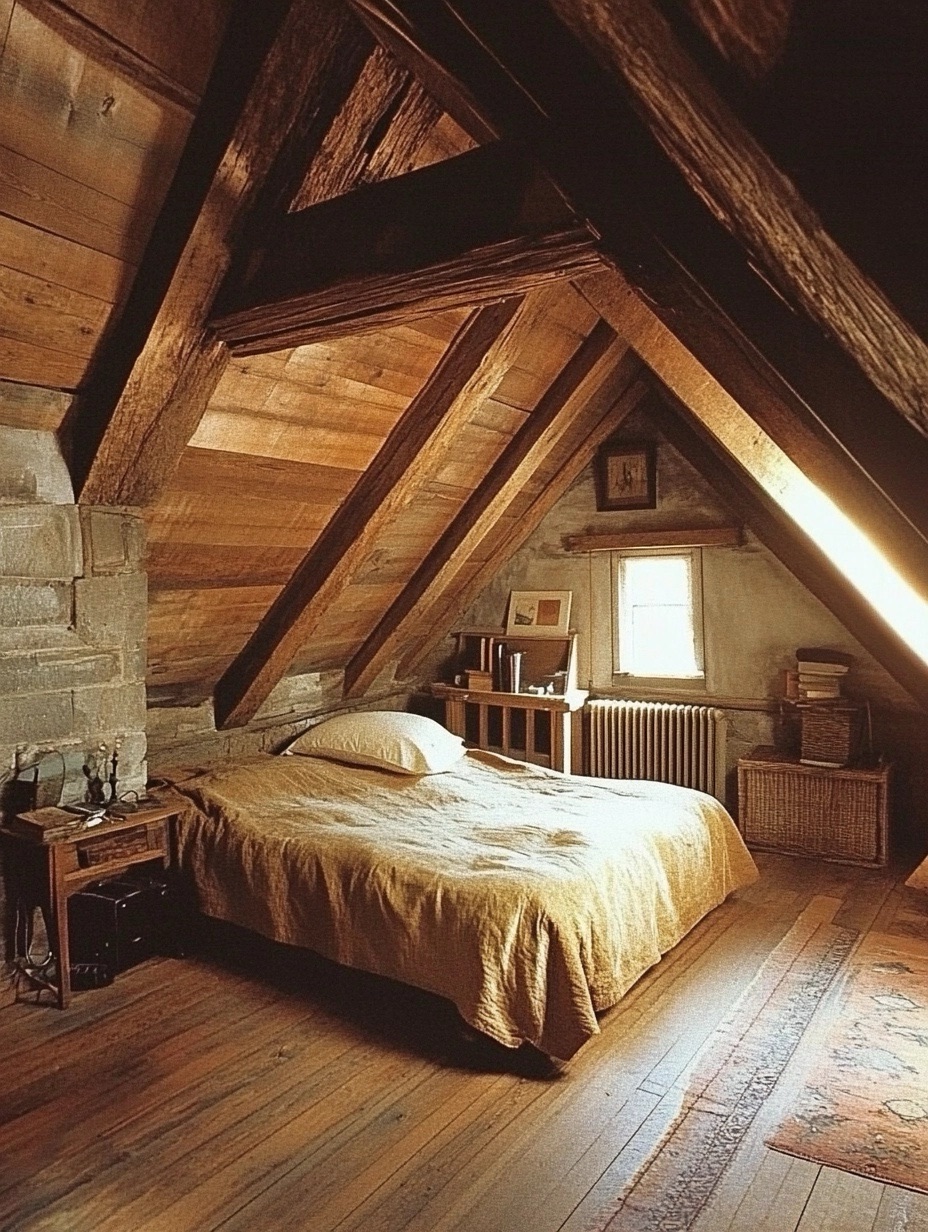
Introduction
A low-ceiling attic bedroom can feel cozy, but it also comes with design challenges. The limited height and confined space can make the room seem cramped. However, with the right design choices, you can make the space appear much more open and airy. In this article, we’ll cover several tips and tricks that will help you visually expand your attic bedroom, turning it into a comfortable and stylish retreat.
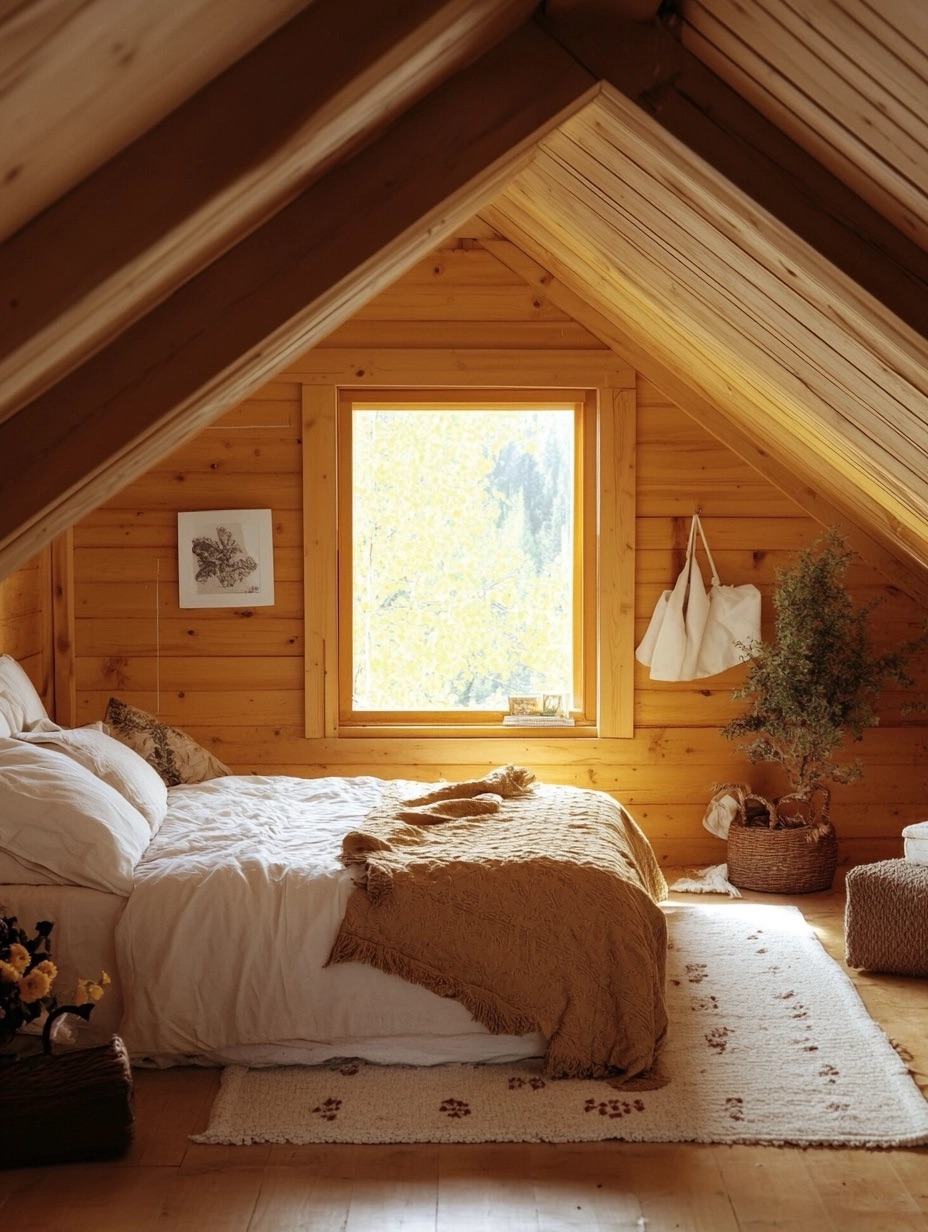
Optimize Lighting for Brightness
Natural Lighting Is Key
One of the best ways to make a low-ceiling room feel larger is by maximizing natural light. Large windows or skylights can flood the room with light, making it feel more open. If possible, keep window treatments minimal, using sheer curtains to allow more daylight in.
Use Soft, Ambient Lighting
If natural light is limited, focus on creating soft ambient lighting. Avoid heavy, ornate lighting fixtures, as they draw attention to the ceiling’s height. Instead, opt for simple floor lamps or table lamps that diffuse light across the room evenly.
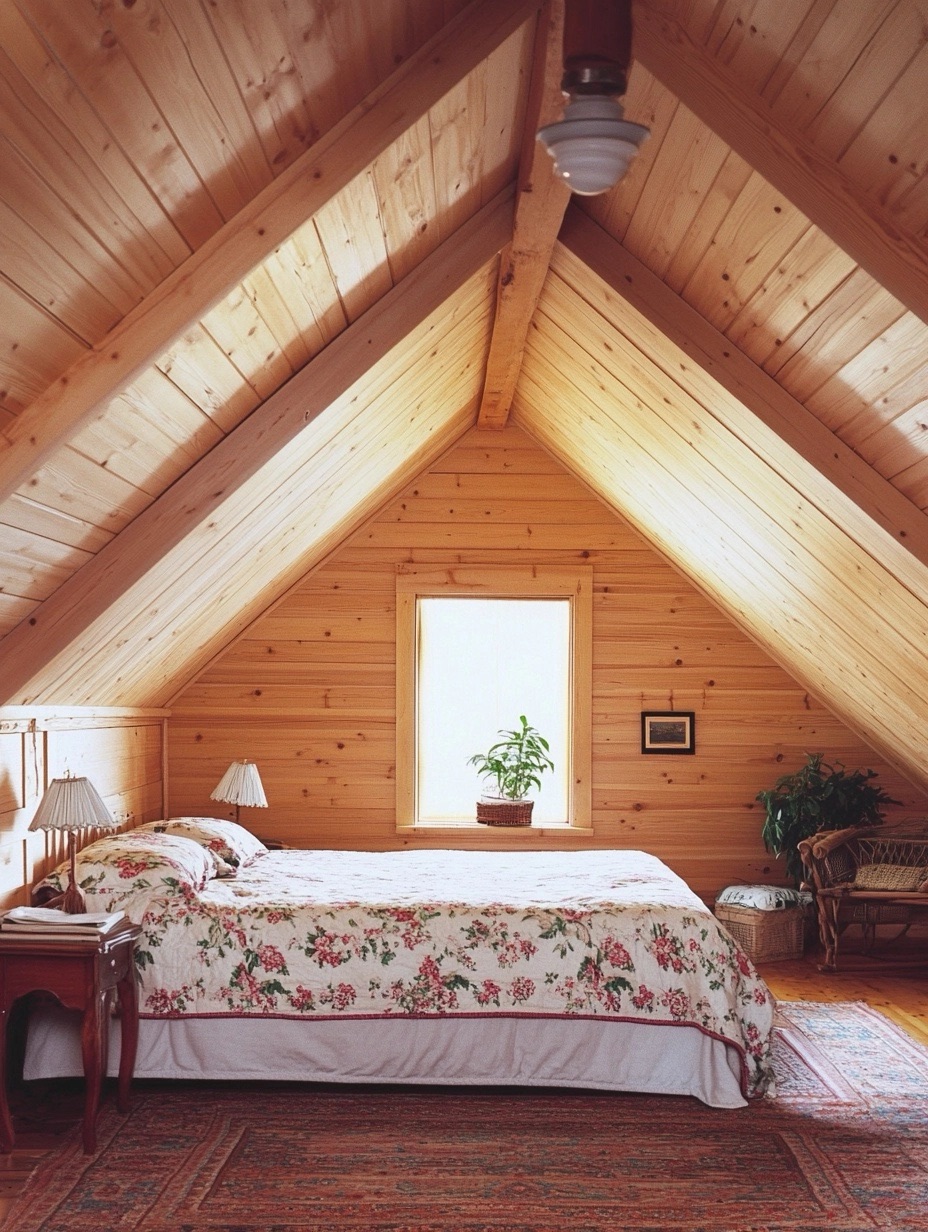
Install Recessed Lighting to Avoid Visual Clutter
Recessed lighting is a great option for low-ceiling spaces. It provides ample light without taking up headroom, helping the ceiling feel higher and the room less cluttered.
Choose Light and Neutral Colors
Light Shades on Walls and Ceilings
To create the illusion of more space, use light, neutral colors for the walls and ceiling. White, cream, light grey, and pale pastels reflect light, making the room feel brighter and larger. Dark colors, on the other hand, absorb light and can make the ceiling feel lower.
Matching Color Scheme for Furniture
Stick to a cohesive color palette when selecting furniture. Choose pieces that complement the wall colors to maintain a sense of continuity, making the room appear less fragmented and more open.
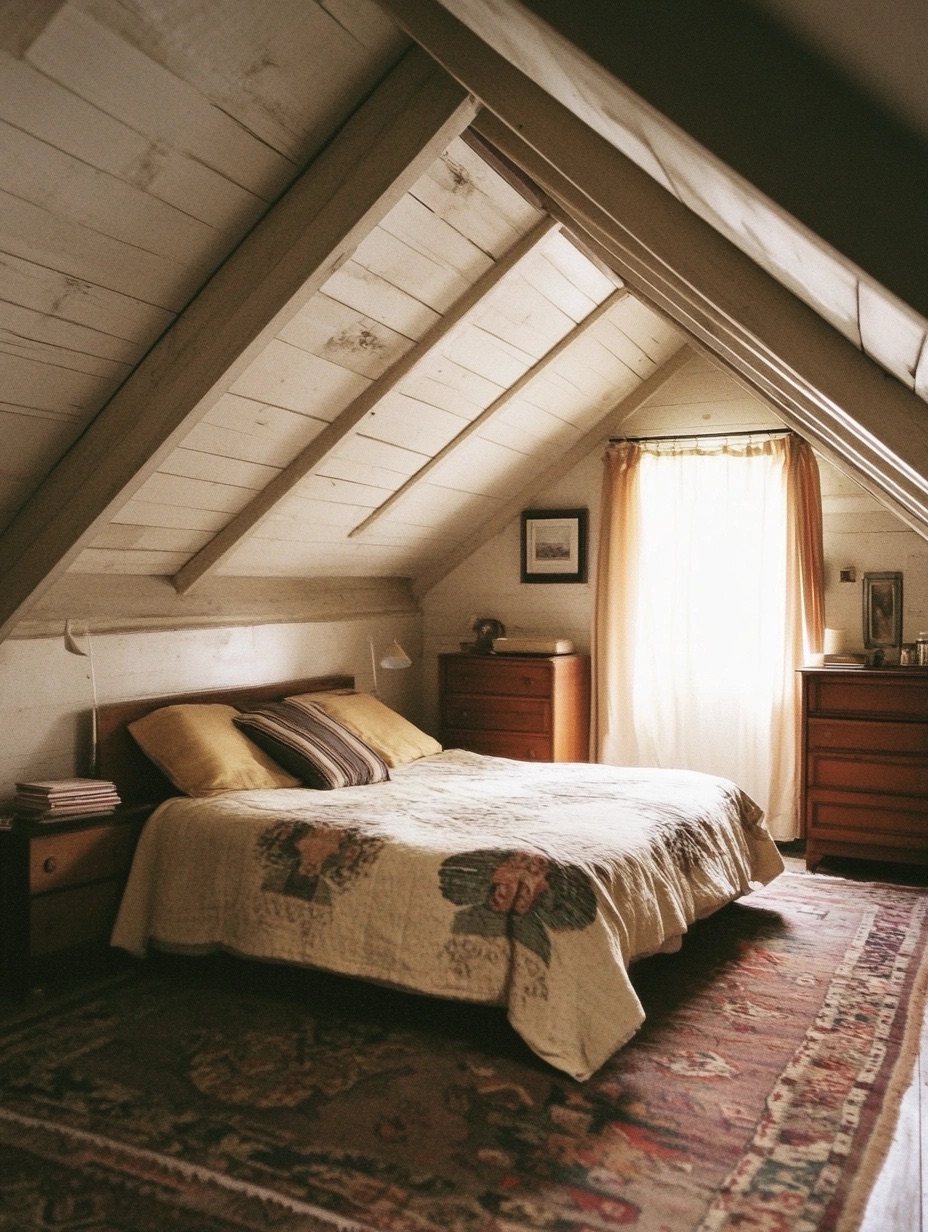
Avoid Dark or Bold Accent Walls
While accent walls can add visual interest, they can also break up the space, making it feel smaller. In a low-ceiling room, it’s best to avoid dark or bold accent walls that might make the room feel more enclosed.
Use Vertical Lines to Create Height
Vertical Stripes in Wallpaper or Paint
Vertical stripes can trick the eye into seeing more height than there actually is. Incorporating vertical patterns through wallpaper, paint, or even decorative elements like tall artwork will draw the eye upward and make the ceiling seem taller.
Use Tall, Slim Furniture Pieces
Choosing tall, slim furniture, like narrow bookcases or high cabinets, can also enhance the room’s verticality. By using taller furniture, you direct the eye upward, making the ceiling appear higher.
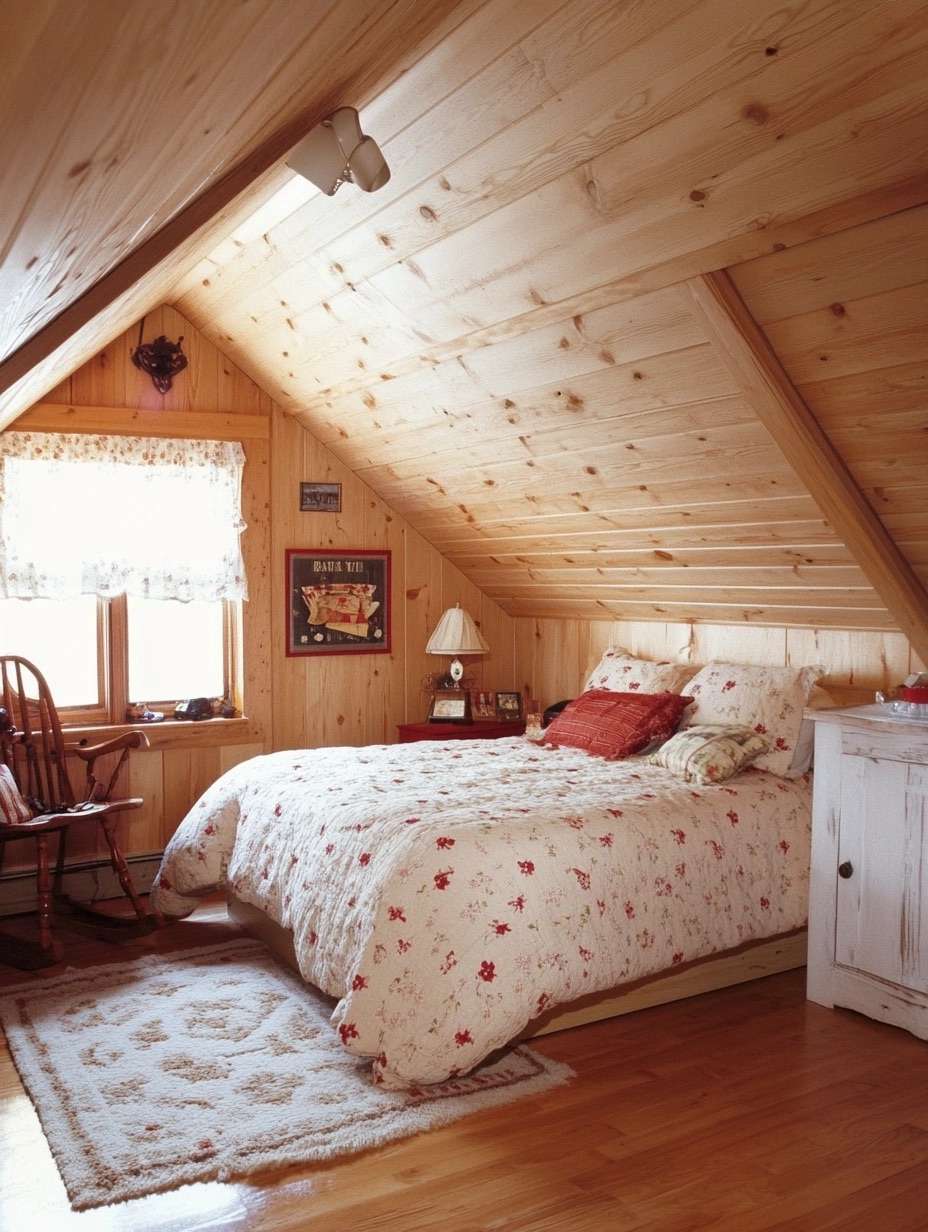
Maximize Floor Space with Minimalist Furniture
Opt for Low-Profile Beds
Low-profile beds are perfect for attic bedrooms with low ceilings. These beds sit closer to the floor, emphasizing horizontal space and making the room feel less cramped. Platform beds or futons work well in such spaces.
Multifunctional Furniture (E.g., Storage Beds)
Maximize every inch of space by choosing multifunctional furniture. Beds with built-in storage, for example, help keep clutter to a minimum and reduce the need for extra furniture, allowing the room to feel more open.
Built-In Storage Solutions
Consider incorporating built-in storage into the walls or under the eaves. Custom storage solutions can maximize floor space, which helps make the room feel less confined.
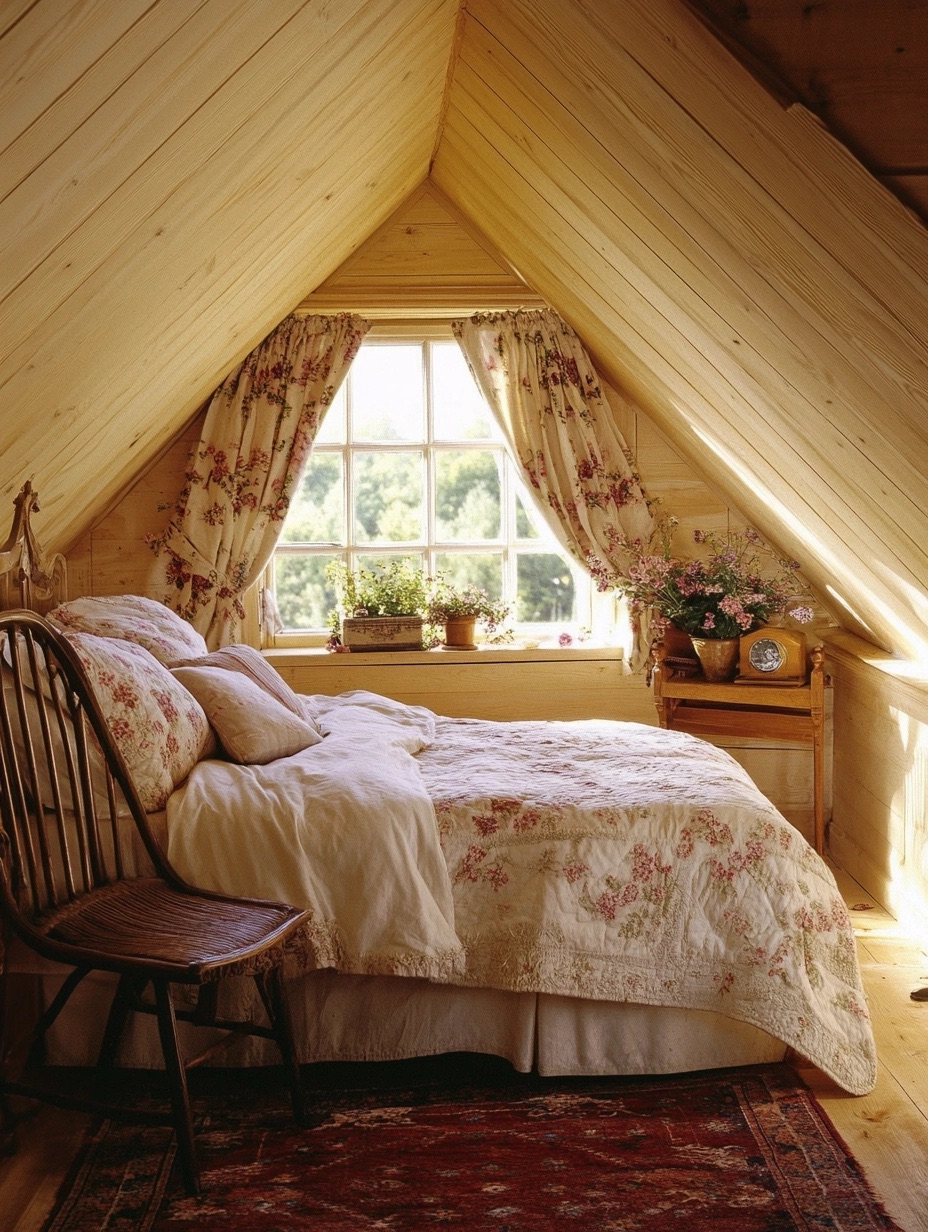
Add Mirrors to Reflect Light
Strategically Place Large Mirrors
Mirrors are an excellent way to reflect light and visually expand a room. Position a large mirror across from a window or another light source to bounce light around the room, creating the illusion of more space.
Use Mirrored Furniture or Décor
Mirrored furniture or decorative accents can also enhance the sense of space. Pieces like mirrored side tables or reflective wall décor help bounce light throughout the room, adding to its openness.
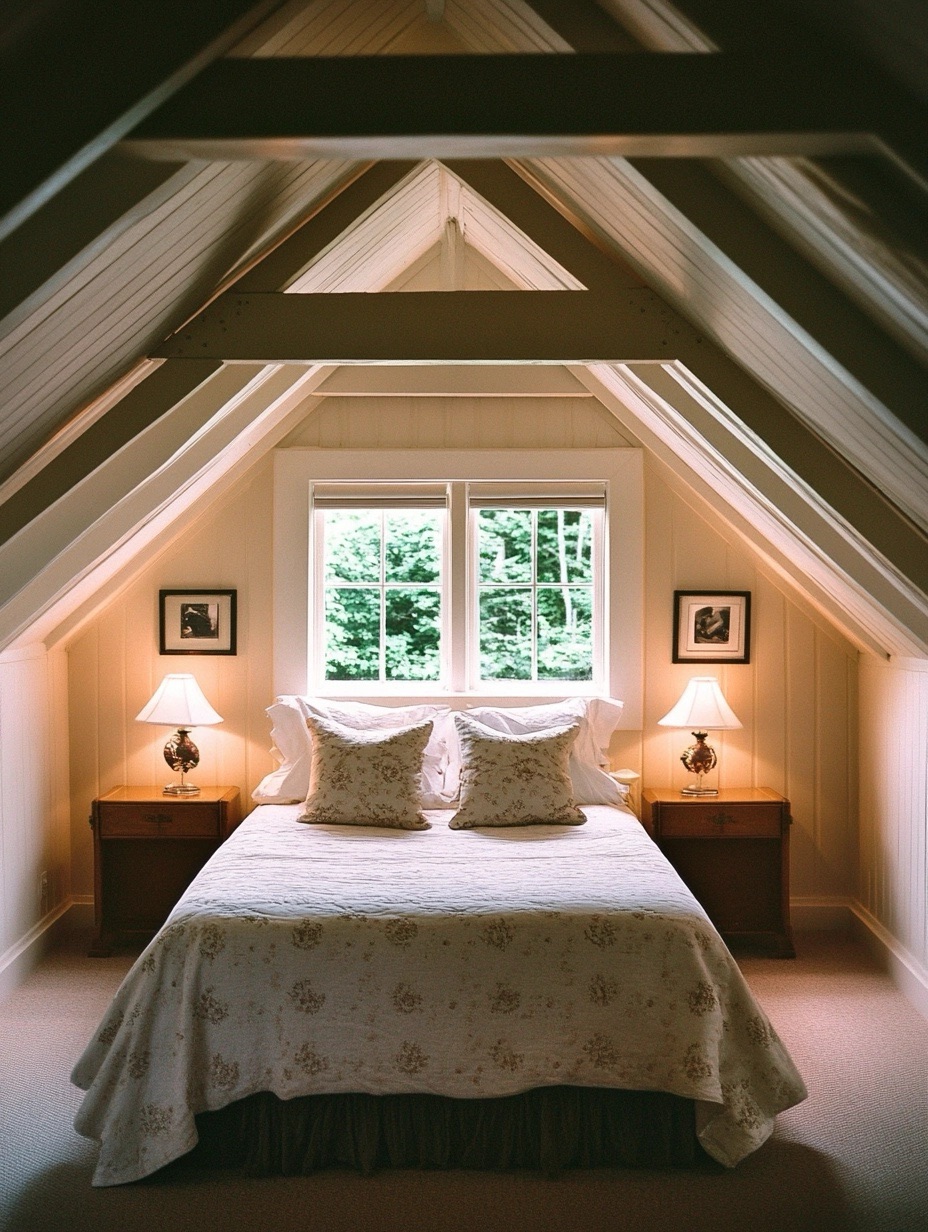
Keep the Ceiling Simple
Use Matte Paint Finishes for Ceilings
A glossy ceiling finish can highlight imperfections and draw attention to the ceiling’s height. Instead, opt for a matte paint finish, which will minimize reflections and make the ceiling recede, creating the illusion of more space.
Avoid Hanging Lights or Ceiling Fans
Hanging lights, ceiling fans, or chandeliers can take up precious vertical space and make the room feel even smaller. In a low-ceiling attic, it’s best to avoid these fixtures altogether, opting for more space-efficient lighting solutions instead.
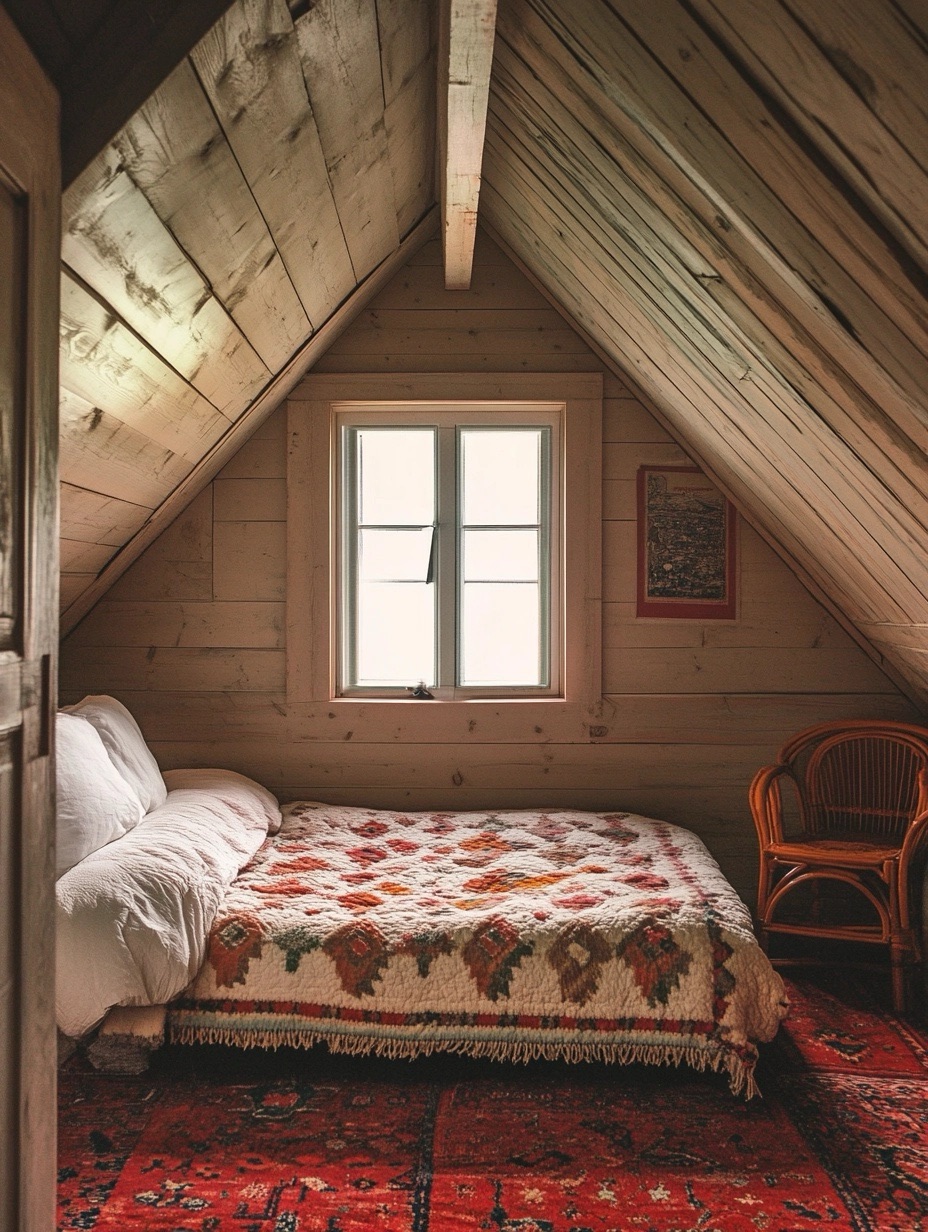
Create Visual Continuity Between Rooms
Open Doorways and Minimize Walls
Creating an open floor plan or large doorways between the attic bedroom and adjacent rooms can increase the sense of space. By eliminating unnecessary walls or barriers, you can extend the visual flow of the room.
Extend Flooring and Wall Colors to Other Areas
Keeping the flooring and wall colors consistent across adjoining rooms helps create visual continuity. This trick allows the eye to flow through different spaces without interruption, making them feel larger.
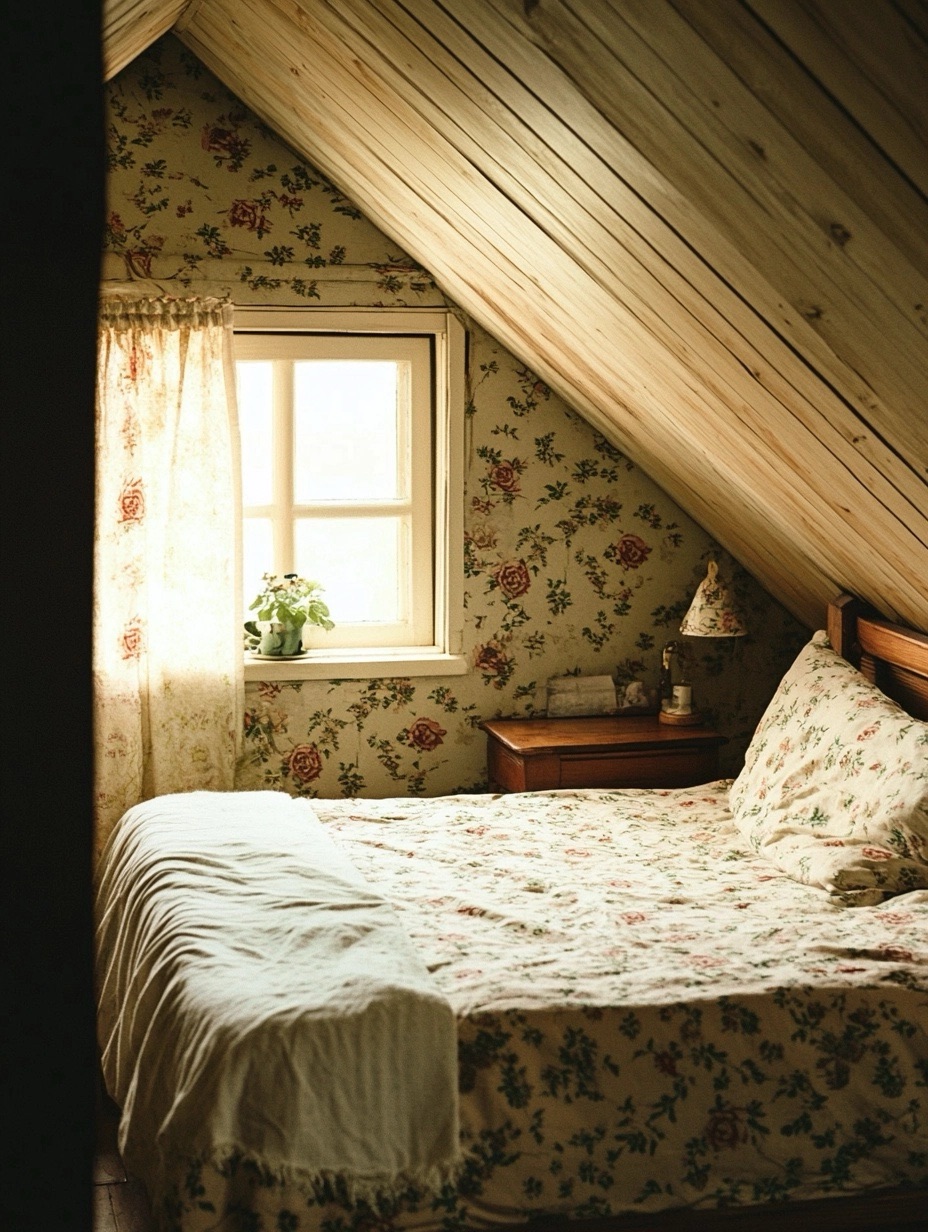
Use Low Furniture to Emphasize Horizontal Space
Choose Low Sofas and Chairs
In addition to a low-profile bed, choose low sofas and chairs for the rest of the room. These pieces help emphasize horizontal space, allowing the room to feel more expansive.
Keep Furniture Proportional to Room Size
Be mindful of the size of the furniture in relation to the room. Oversized pieces can overwhelm a small attic space. Stick to smaller, appropriately scaled furniture that fits within the room’s dimensions.
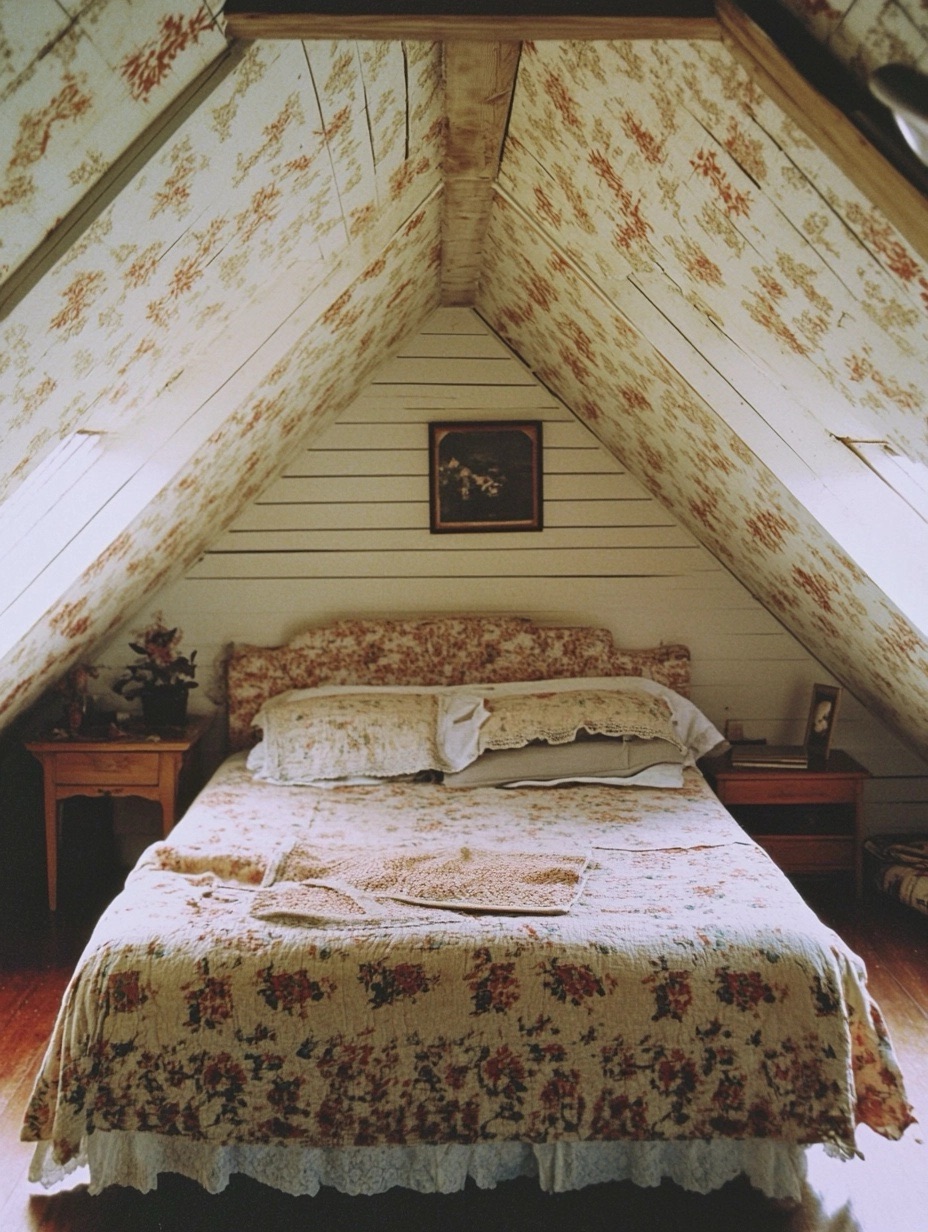
Utilize Vertical Storage
Install Shelves High on the Wall
Make use of vertical space by installing shelves high up on the walls. This creates additional storage without taking up valuable floor space, and also draws the eye upward.
Use Hooks for Hanging Décor or Plants
Hooks can be used for hanging décor, plants, or even storage baskets. This is another way to keep the floor uncluttered while making the most of vertical space.
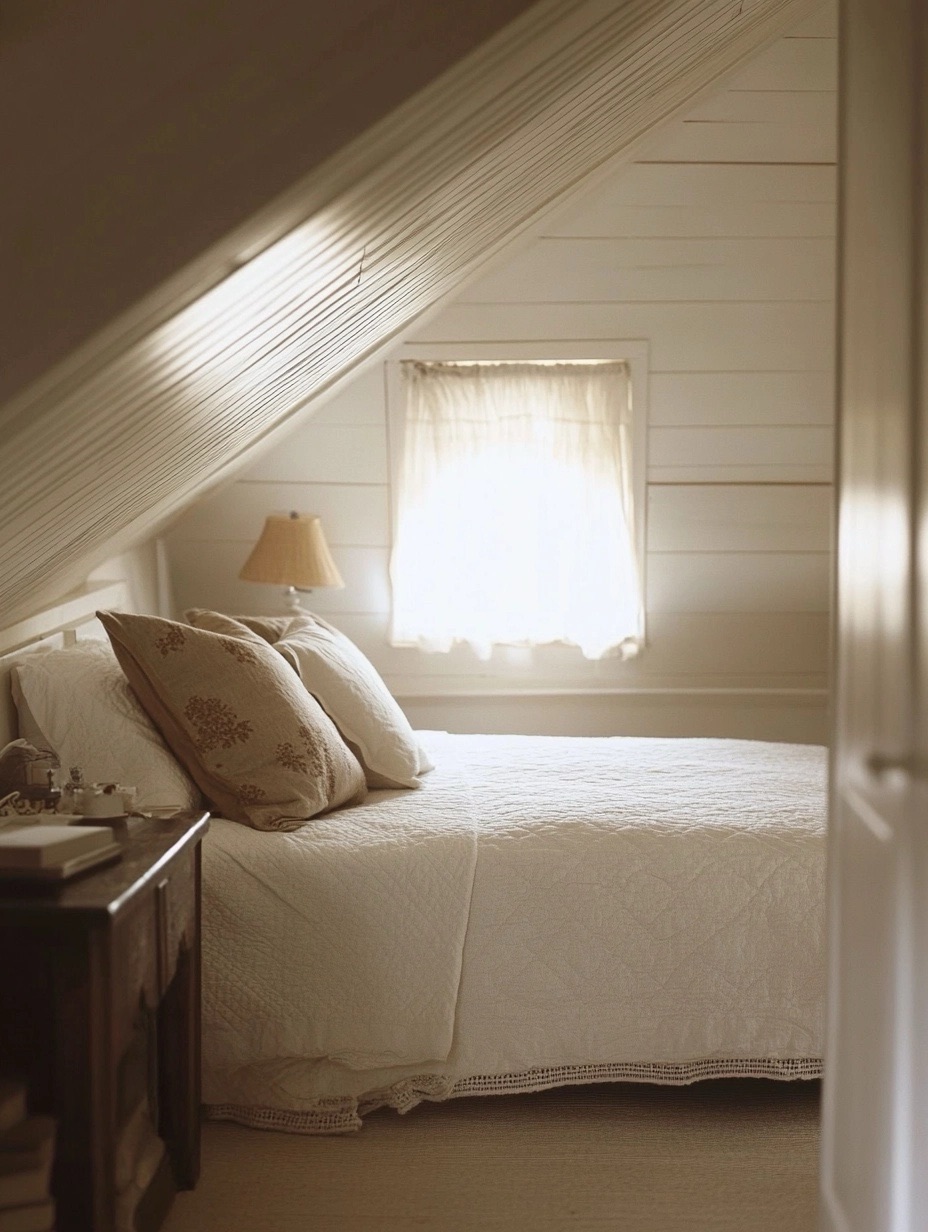
Keep the Room Decluttered
Stick to a Minimalist Décor Style
To make the most of a small attic bedroom, stick to a minimalist décor style. Too much clutter can make the room feel busy and cramped. Instead, choose a few key pieces that serve both functional and aesthetic purposes.
Store Away Non-Essential Items
Use built-in storage or multifunctional furniture to store away non-essential items. Keeping surfaces clear and free of clutter will help the room feel larger and more open.
Play with Textures and Patterns
Add Subtle Patterns to Create Depth
Subtle patterns can add depth to a small room without overwhelming the space. For example, soft geometric patterns on bedding or rugs can create visual interest while maintaining the open feel.
Use Soft Textures for Warmth
Soft, warm textures like plush rugs, blankets, and throw pillows can make the room feel cozy without taking up too much visual space. Stick to light colors and simple designs to maintain a spacious atmosphere.
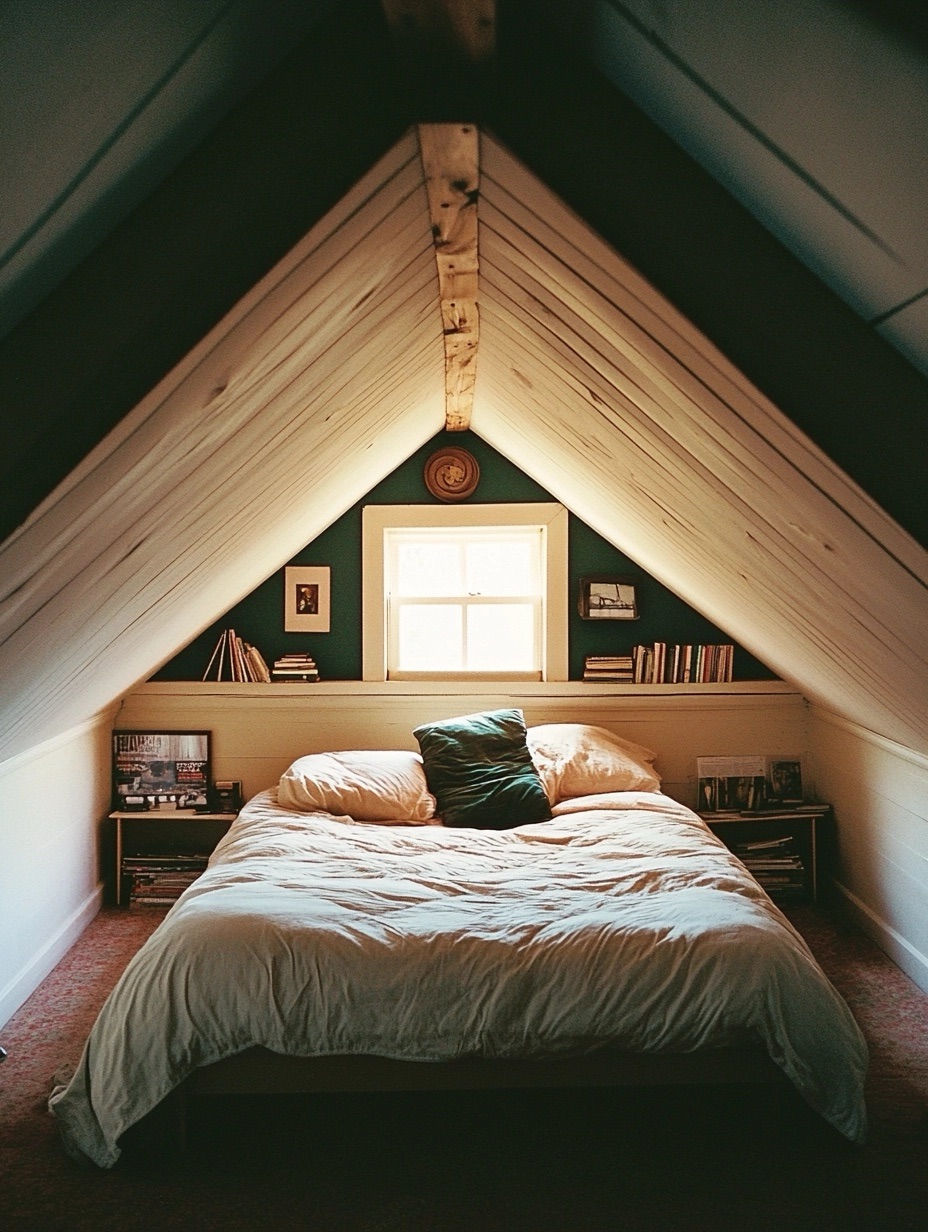
Incorporate Skylights if Possible
Benefits of Skylights in Small Spaces
Skylights are an excellent solution for attic bedrooms. They open up the ceiling, allowing more natural light to flood the room and making the space feel more expansive.
How Skylights Can Open Up the Ceiling
Skylights visually extend the ceiling upwards, especially in a low-ceiling room. This architectural feature creates the illusion of height, giving the room a much-needed sense of openness.
Add Plants to Enhance Verticality
Choose Tall, Slim Plants
Tall, slim plants are a great addition to an attic bedroom. They draw the eye upward, enhancing the sense of height and vertical space.
Use Hanging Plants for a Lush Look
Hanging plants are another excellent way to introduce greenery without taking up valuable floor space. Place them near windows or corners to create a lush, natural atmosphere that doesn’t feel crowded.
Conclusion
By following these tips, you can transform your low-ceiling attic bedroom into a spacious and comfortable retreat. From optimizing lighting and using light colors to selecting low-profile furniture and adding vertical elements, thoughtful design choices can make a big difference. Remember, the key is to enhance verticality and keep the space as open and uncluttered as possible.
Leave a Reply